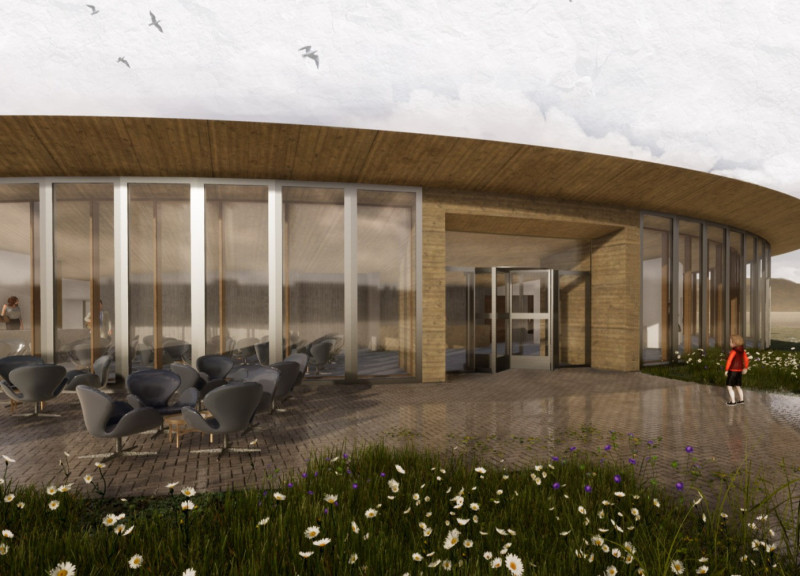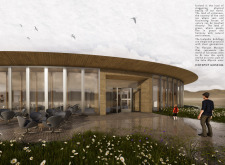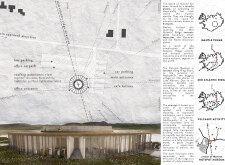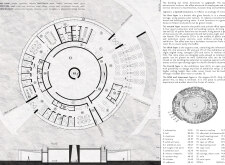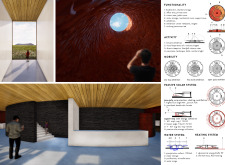5 key facts about this project
Architectural conceptually, the museum is rooted in the symbolism of a circle, representing wholeness and continuity. This concept not only reflects the geographical context but also enhances the visitor experience by promoting movement and exploration within the space. The building's layout is organized into multiple layers, with each zone serving specific functions, including exhibition areas, educational facilities, a cafeteria, and visitor services. The design facilitates a seamless flow between these spaces, enabling diverse interactions among visitors.
Sustainability is a key focus of this project, evident in the material choices and energy systems integrated into the design. The use of wood, basalt, concrete, steel, and glass contributes not only to the structural integrity of the building but also to its aesthetic coherence with the surrounding landscape. Passive solar systems, rainwater harvesting techniques, and geothermal heating systems exemplify the project's commitment to environmental considerations.
Unique Design Features and Elements
One of the defining characteristics of the Hotspot Museum is its emphasis on natural observation. The architecture incorporates large windows and expansive viewing areas, designed to maximize visual connections with the stunning natural scenery. This design approach allows visitors to engage with the stunning landscape, reinforcing the museum's educational objectives regarding Iceland's geology and biodiversity.
The layered approach to the building's layout allows for a diversity of experiences. The first layer includes a double skin facade, which contributes to thermal efficiency while providing a visual connection to the exterior. The central exhibition areas are adaptable, enabling the museum to host various displays and educational programs. Dedicated spaces for smaller, intimate gatherings foster focused learning experiences within a serene environment.
Integration with Nature and Community Engagement
The rooftop terrace is a particularly innovative aspect of the design, providing access to outdoor space that encourages stargazing and wildlife observation. This feature emphasizes the museum's role as a community resource, inviting the public to connect with nature. The incorporation of outdoor learning experiences aligns with Iceland's active engagement with its natural surroundings and supports the museum's mission to foster environmental stewardship.
The architectural design of the Hotspot Museum exemplifies a thoughtful response to site-specific challenges and cultural narratives. This project highlights the integration of sustainability with education, promoting an appreciation for the intricate relationship between the land and its geological composition.
For a deeper understanding of the Hotspot Museum, explore its architectural plans, sections, and design elements. Reviewing these components will provide insights into the innovative architectural ideas that shape this unique project.


